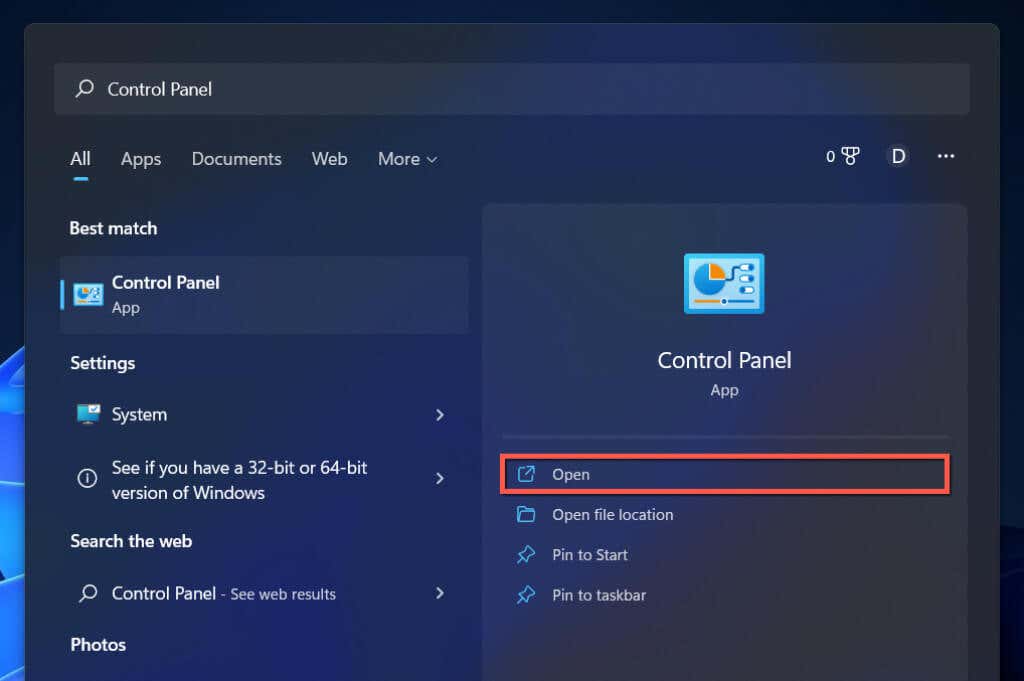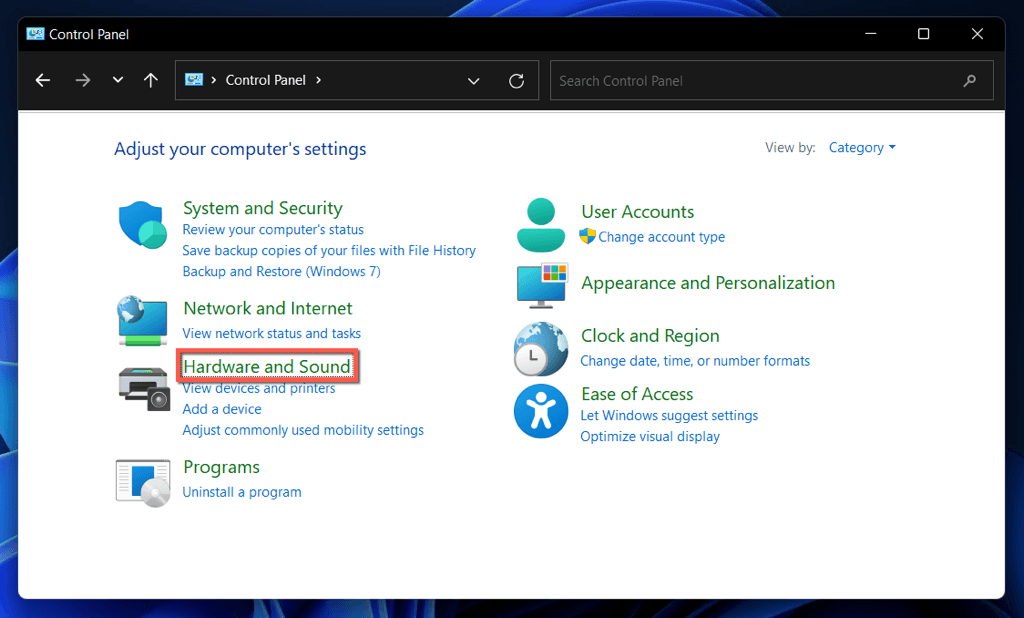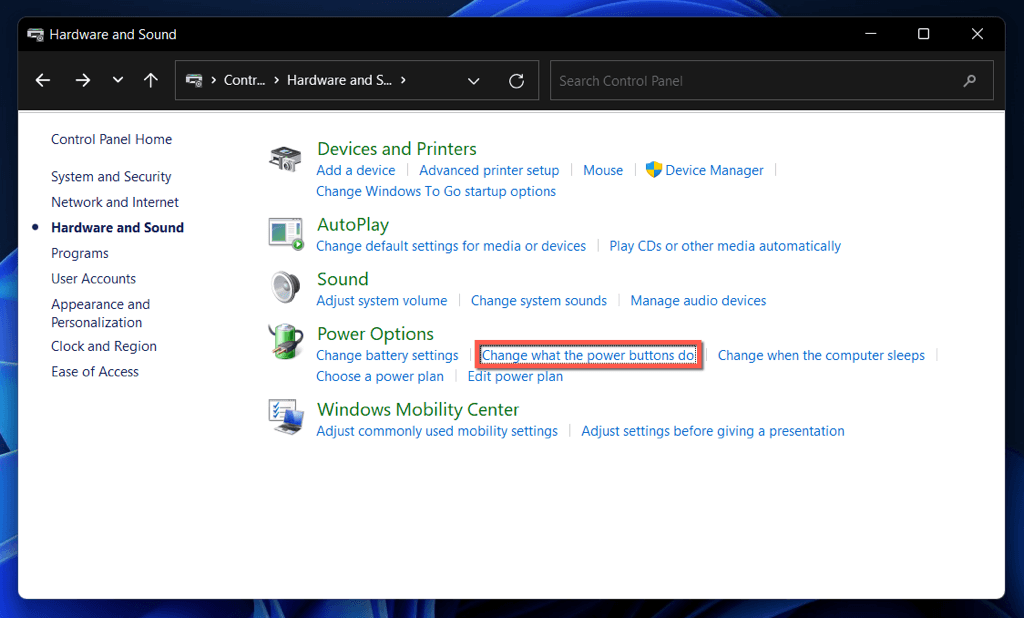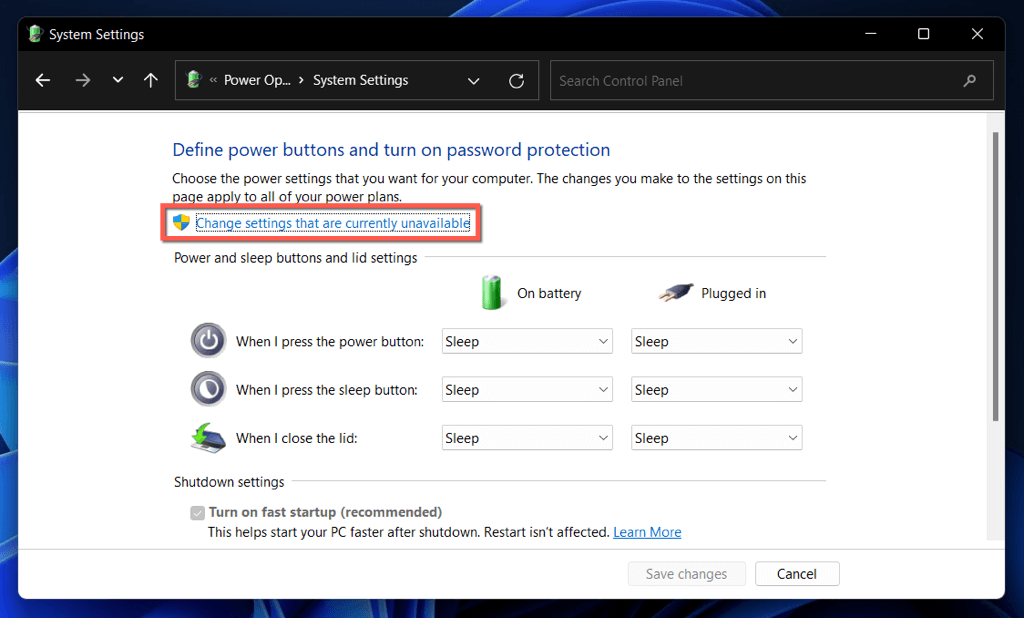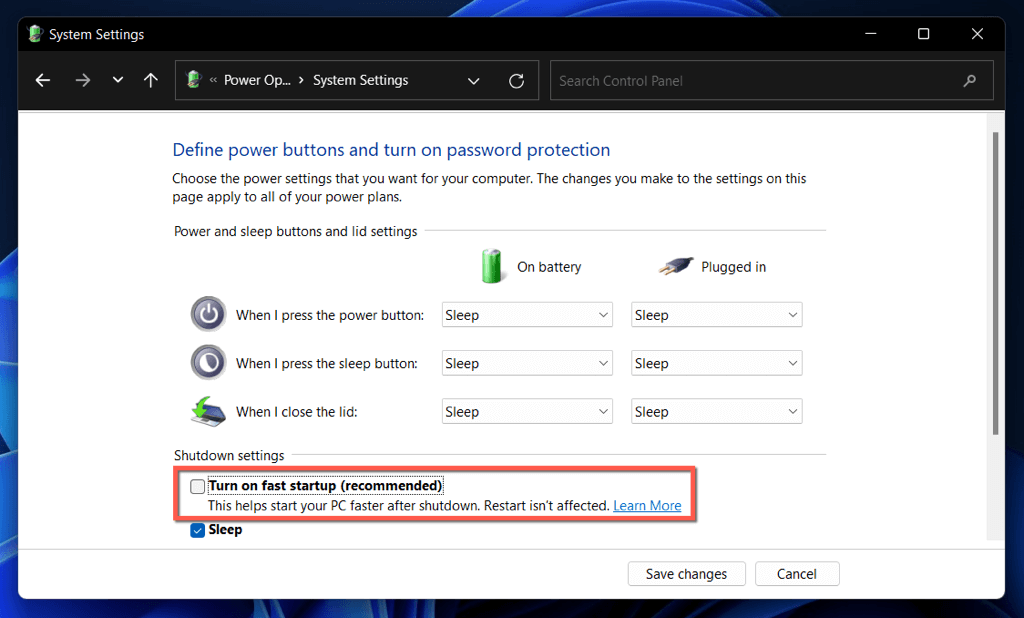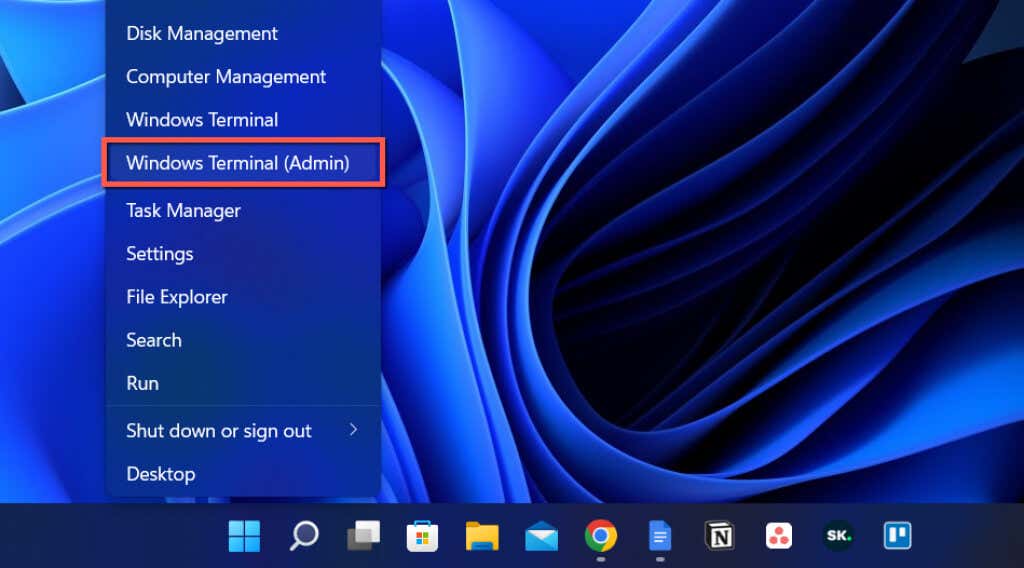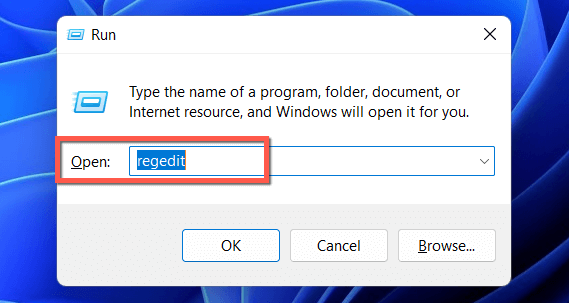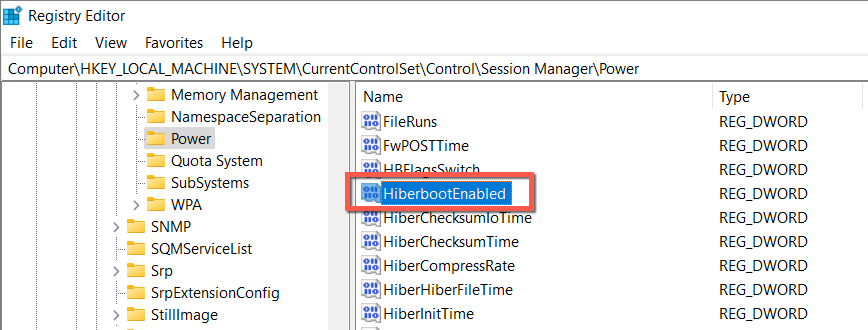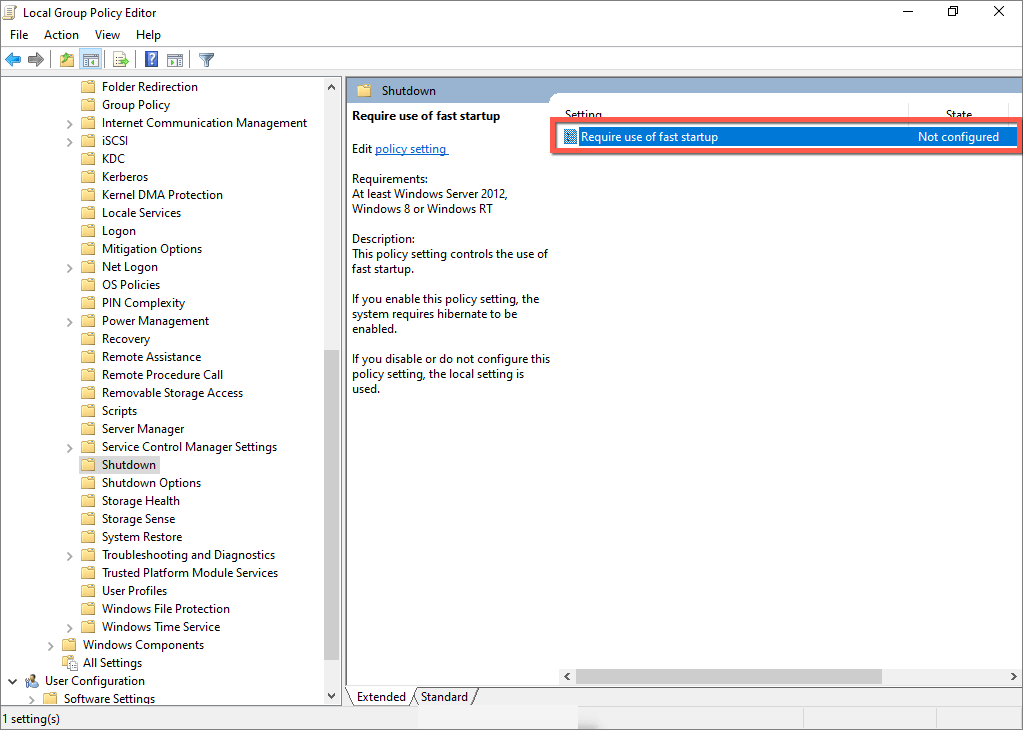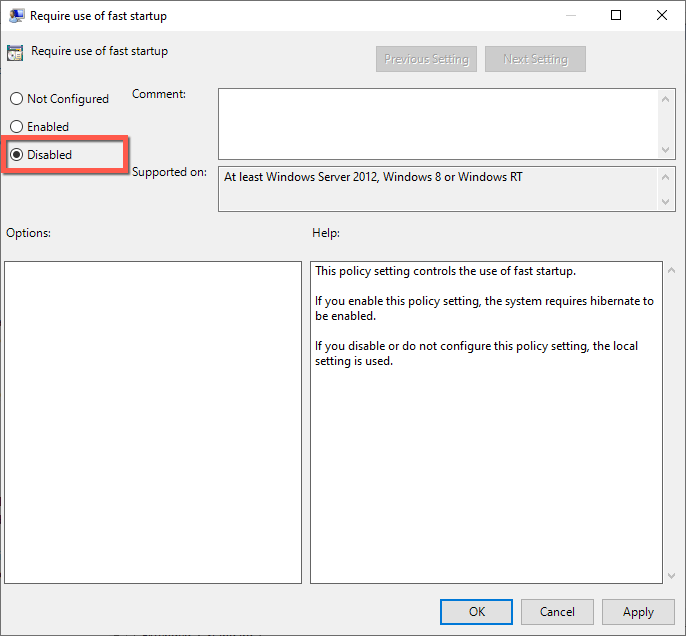How to Disable Fast Startup in Windows 11/10 (And Why You Should)
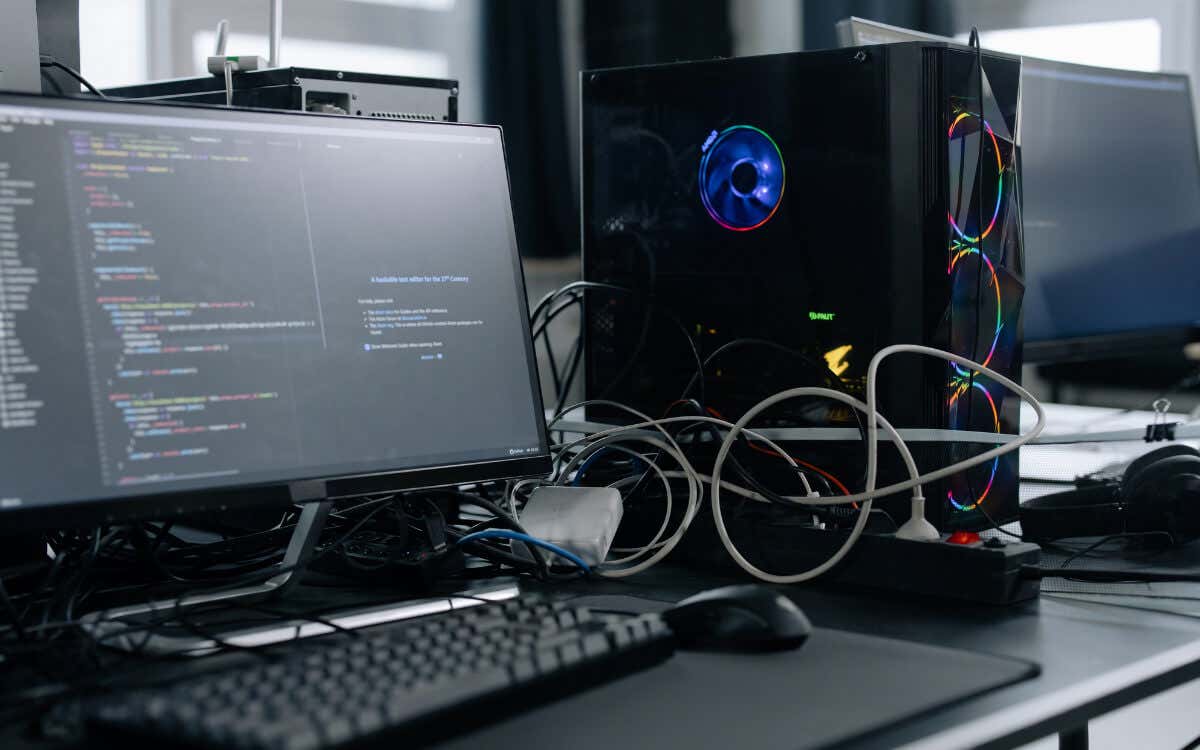
Did you know that a Windows 10 or 11 shutdown doesn’t really shut down your computer? That’s because of Fast Startup. Read on to learn about Fast Startup and how to disable it in Microsoft Windows.
Fast Startup, as its name implies, is a built-in Windows functionality that allows your computer to boot faster from a cold shutdown. That sounds like a good thing, right? Not always. We’ll explain what Fast Startup is and why you might want to disable it in Windows 10 or 11.
What Is the Fast Startup Feature?
Before you get to know how Fast Startup works, it’s a good idea to understand what the “kernel” is in Windows.
Basically, the kernel is the core of the operating system, and it’s what makes the software and hardware work. It’s always in memory, and it’s also what your computer’s firmware—the BIOS یا UEFI—loads first.
When you turn off your PC, Windows closes all open apps and programs, signs you out of your user account, and powers down the operating system. At least, that’s what you think, right?
Starting Windows 8, however, a shutdown doesn’t shut everything down in the traditional sense. Instead, it caches the kernel to the hiberfil.sys (a.k.a. the hibernation file).
Since the kernel is what makes everything tick, having it in a state that makes it ready to go at a moment’s notice allows your computer to boot up faster when you initiate a cold start.
Fast Startup doesn’t significantly improve the startup time if Windows loads off a speedy SSD (solid state drive) or you have a powerful PC setup in general. However, it does shave off multiple seconds when booting the operating system from an older hard drive.
Why You Should Disable Fast Startup
Despite the advantage that Fast Startup brings, it can often be the source of multiple issues on a computer running Windows 10 or 11.
For starters, repeatedly loading the same kernel session increases the chances of creating mismatches between actual and cached software components, especially after system or driver updates.
That could lead to بی ایس او ڈی (موت کی نیلی سکرین) and other startup errors or prevent hardware peripherals from working correctly. Fast Startup also tends to cause problems while finalizing Windows updates.
Furthermore, if your computer is in a dual or multi-boot configuration (e.g., Windows and Linux), Fast Startup is known to lock access to the Windows drive when booting into a non-Windows operating system.
Even worse, making changes to partitions from one operating system might lead to corruption issues when switching over to another.
Suppose you believe that Fast Startup is the reason behind a particular problem (or you want to avoid a potential conflict because of it); you can temporarily stop Windows from caching the kernel during a shutdown.
Here are a couple of methods to help you with that:
- Perform a regular shutdown while holding down the منتقل کلیدی
- منتخب کریں دوبارہ شروع کریں بجائے بند کرو to prompt the operating system to shut down and reboot automatically. This can come as a surprise, but an automatic restart skips Fast Startup, while a “full shutdown” does not.
How to Disable Fast Startup in Windows
Although it’s easy to bypass Fast Startup and clear the kernel cache, you may want to consider disabling Fast Startup altogether if your computer keeps running into issues constantly or you have multiple operating systems installed.
Disable Fast Boot via the Control Panel
The fastest way to turn off Fast Startup in Windows 11 and 10 is to use the کنٹرول پینل. بس:
- کھولو اسٹارٹ مینو، قسم کنٹرول پینل، اور منتخب کریں اوپن.
- منتخب کریں ہارڈ ویئر اور آواز زمرہ.
- منتخب کریں منتخب کریں کیا بجلی کے بٹن do کے تحت پاور اختیارات سیکشن پر ایک اقتصادی کینڈر سکین کر لیں۔
- منتخب کریں ترتیبات کو تبدیل کریں جو فی الحال دستیاب نہیں ہیں.
- کے ساتھ والے باکس کو غیر نشان زد کریں۔ تیزی سے شروع اپ لوڈ کریں (تجویز کردہ) بوٹ آپشن.
- منتخب کریں تبدیلیاں محفوظ کرو.
If you don’t see the Fast Startup option, the افسوس power setting is likely disabled on your computer. Run the command below in an elevated Windows PowerShell or Command Prompt console to activate it:
- دائیں پر کلک کریں بٹن کا آغاز کریں اور منتخب کریں ونڈوز PowerShell/Terminal (Admin). Or, type سییمڈی into the Start menu and choose ایڈمنسٹریٹر کے طور پر چلائیں.
- مندرجہ ذیل کمانڈ ٹائپ کریں:
powercfg /حبنیٹ on
- پریس درج.
You can now disable Fast Startup via the Control Panel.
Disable Fast Boot via the Registry Editor
Another—albeit less convenient—method to disable Fast Startup is to perform the following tweak via the Registry Editor. It’s best to سسٹم رجسٹری کا بیک اپ بنائیں شروع کرنے سے پہلے
- پریس ونڈوز + R، قسم کی regedit، اور منتخب کریں OK.
- Copy the following path into the address bar at the top of the Registry Editor window and press درج:
HKEY_LOCAL_MACHINESYSTEMCurrentControlSetControlSession ManagerPower
- ڈبل کلک کریں ہائبربوٹ ایبل registry value on the right pane.
- درج 0 میں ویلیو ڈیٹا فیلڈ اور منتخب کریں۔ OK.
- رجسٹری ایڈیٹر سے باہر نکلیں۔
- اپنے کمپیوٹر کو بند کریں اور دوبارہ شروع کریں۔
Disable Fast Boot via the Local Group Policy Editor
If your PC runs the Profesional, Enterprise, or Education editions of Windows 10 or 11, you can use the Local Group Policy Editor to disable Fast Startup.
- رن باکس کھولیں، ٹائپ کریں۔ gpedit.msc، اور منتخب کریں OK.
- Navigate to the following location on the Local Group Policy Editor sidebar:
کمپیوٹر کی ترتیب > انتظامی سانچے > نظام > بند
- ڈبل کلک کریں Require use of fast startup دائیں پین پر پالیسی کی ترتیب۔
- آگے والے ریڈیو بٹن کو منتخب کریں۔ غیر فعال کر دیا.
- منتخب کریں کا اطلاق کریں اور OK.
Fast Startup: Keep It or Disable It
Unless you use a fairly old PC with a mechanical HDD or just the bare minimum CPU or RAM needed to run Windows 11 or 10, you probably won’t see a significant performance increase to the boot time with Fast Startup enabled.
However, there’s little reason to disable Fast Startup permanently unless you encounter persistent issues, have trouble installing updates, or use more than a single operating system. Don’t forget that you can easily bypass the feature whenever you want.

